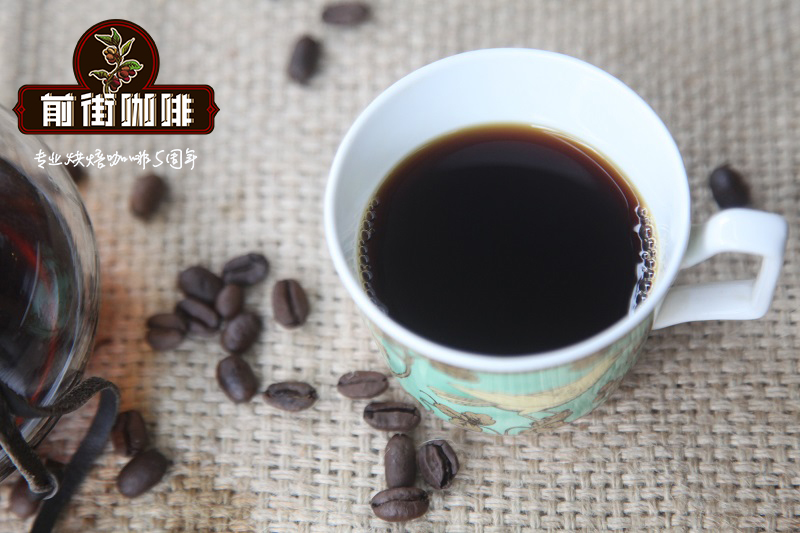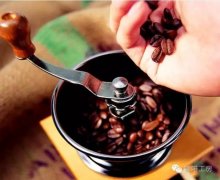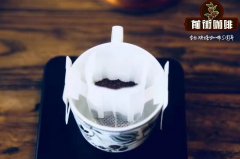How did Chemex coffee maker come from? introduction to brewing coffee with Chemex coffee maker.

Professional coffee knowledge exchange more coffee bean information please follow the coffee workshop (Wechat official account cafe_style)
Chemex coffee pot uses the high temperature and corrosion resistant glass flask in the chemistry laboratory as the foundation, it is resistant to high temperature and chemical corrosion, the whole process does not come into contact with the possibility of plasticizer, and the taste of the coffee is clearer and cleaner. Interestingly, even the filter paper used at first was obtained from the laboratory.
The overall shape of the Chemex coffee pot is like a combination of triangular flask and funnel, minimizing the adverse factors in hand-making, fully showing the ultimate flavor of boutique coffee, even beginners can make good coffee.
So where did the Chemex coffee maker come from? This beautiful pot was invented in 1941 by Dr. Peter J.Schlumbohm Chemistry, born in Germany, and named Chemex in the United States. The coffee pot has a history of nearly 70 years. The doctor modified it based on a laboratory glass funnel and tapered flask, especially adding an exhaust passage and a water outlet that Dr. Schlumbohm called (airchannel). With this exhaust channel, when brewing coffee, you can not only make the hot air avoid the filter paper and make the coffee extraction more complete, but also pour the coffee out easily along the trough. And add a detachable anti-scalding wood handle in the middle and tie it with a fine leather string, just like a bow on a beautiful girl's slender waist.
During World War II, various metals, as important strategic materials, were scarce, while the Chemex coffee maker as a whole was composed of glass, wooden burn-proof grip and leather rope, which was highly respected by even the President of the United States at that time. Due to the extreme design and craftsmanship of the Chemex coffee maker, it has been listed as a permanent collection by the New York Museum of Modern Art (MoMA), the Philadelphia Museum of Art, the Smithsonian Museum, the Corning Museum and so on.
In 1956, it was selected by the Illinois Institute of Technology as one of the best contemporary design products. There are many practical design details, such as the classic square mouth design, one or two protrusions in the middle of the kettle body used to mark the capacity, the digging of the injection port, and the separation and cleaning of all parts, which is also an important reason for the popularity and long-term spread of the Chemex coffee pot.
Now the Chemex coffee maker has developed a complete product family. One-person pot, one-person drink, three-person pot, shared by the whole family, as well as large-capacity pots for eight and ten, suitable for large families and parties.
[note that the filter paper is folded]
There are detailed instructions on the filter paper box. The official cup of the Chemex coffee maker is semicircular. There are 100 tablets in a box. Because the special filter paper of Chemex is about 20%, 30% heavier than ordinary filter paper, it can filter out all the sediment, and match the right (not too slow, not too fast) water filling speed with the Chemex coffee pot to extract a perfect cup of good coffee without bitterness, which has been a favorite of coffee lovers for more than 70 years.
Steps / methods:
The first step is to fold the filter paper into the spout, let the filter paper fit with the four walls of the spout, and soak the filter paper in hot water to remove the smell of the paper.
The second step is to grind 28 grams of moderately roasted coffee beans into powder, be sure to use fresh coffee beans, ghost teeth grinding 3.5 (moderate grinding), the powder is generally about as thick as sugar)
The gouache ratio is 30 grams of beans + 500ML water to make two cups of coffee. You can also fine-tune it according to your preferences. Use 90 degrees hot water, water in the center, turn clockwise, slowly pour, stew, water flushing at medium speed
The third step, after the beautiful foaming, and then complete the water injection in the next two and a half minutes, similar to the Japanese style.
The coffee extracted from the Chemex coffee pot is made by pouring water, which is very similar to drip coffee in taste and production. The filter paper it uses is 20% more thick and 30% thicker than that used in other coffee utensils, such as Hario's hand brewers, so that the extraction will be slower, the flavor will be more intense, and there will be no coffee grounds.
For the Chemex coffee pot grinding suggestion: only use a conventional or automatic bean grinder, normally the powder should be thicker than other drip pots, some online tutorials say it is the same thickness as the drip pot, and some say it is the same as the French press pot. A better suggestion is to combine these claims: if the coffee is extracted too fast and tastes weak, you should grind it finer; on the contrary, if the coffee powder clogs the filter paper, you should grind it thicker.
Preparing an electronic scale can help you keep the same amount of powder every time. To maintain the 1:17 ratio, 510g of water will be needed for every 30g of coffee powder. When you have a good grasp of the ratio of powder to water, you can pay more attention to grinding powder.
END
Important Notice :
前街咖啡 FrontStreet Coffee has moved to new addredd:
FrontStreet Coffee Address: 315,Donghua East Road,GuangZhou
Tel:020 38364473
- Prev

A new coffee utensil that came out at the end of last year! What are the advantages of it?
Professional coffee knowledge exchange more coffee bean information please follow the coffee workshop (Wechat official account cafe_style) D special pressure designed by the Australian just launched at the end of 2018, the company has received 350% of the crowdfunding on the Kickstarter platform in just 7 days. Although the concept has won public recognition, many details about the product are still unknown. D extra pressure
- Next

How on earth should I make the hanging-ear coffee? can I brew it? Hanging-ear coffee
Professional coffee knowledge exchange more coffee bean information please follow the coffee workshop (Wechat official account cafe_style) how to make coffee? Qianjie Coffee has also seen that some people will choose to hang their ears on a higher cup for brewing, so as not to let them soak in the coffee liquid as far as possible, while others prefer to wash them in shorter cups.
Related
- What is the Philharmonic pressure? How to use Philharmonic pressure to make delicious coffee
- Why does a hand grinder have more fine powder than an electric grinder?
- In addition to the hot mom, what is the difference between the versions of EK43 | ditting and Mahdi ek43?
- What kind of equipment do you need to make coffee by hand? Introduction to novice starter cooking equipment tools
- Espresso needs to be ground how thick and thin scale entry Italian Coffee Machine Bean Grinder investigation and Grinding course
- How much does it cost to open a small private cafe? How much does it cost to learn coffee? How to operate it?
- The difference between the flavor characteristics of hand-brewed coffee and coffee maker is hand-brewed coffee really better than coffee maker? Can I use a coffee machine to make coffee beans by hand?
- The difference between 01 and 02 of hario v60 filter cup what is the difference between 01 and 02 filter cup opening and cooking flavor
- What's the difference between the smart cup and the French kettle? Which is better, the French kettle or the Smart Cup?
- What's the difference between a smart cup and a V60 filter cup? The difference between the taste of smart cup and hand-brewed coffee

